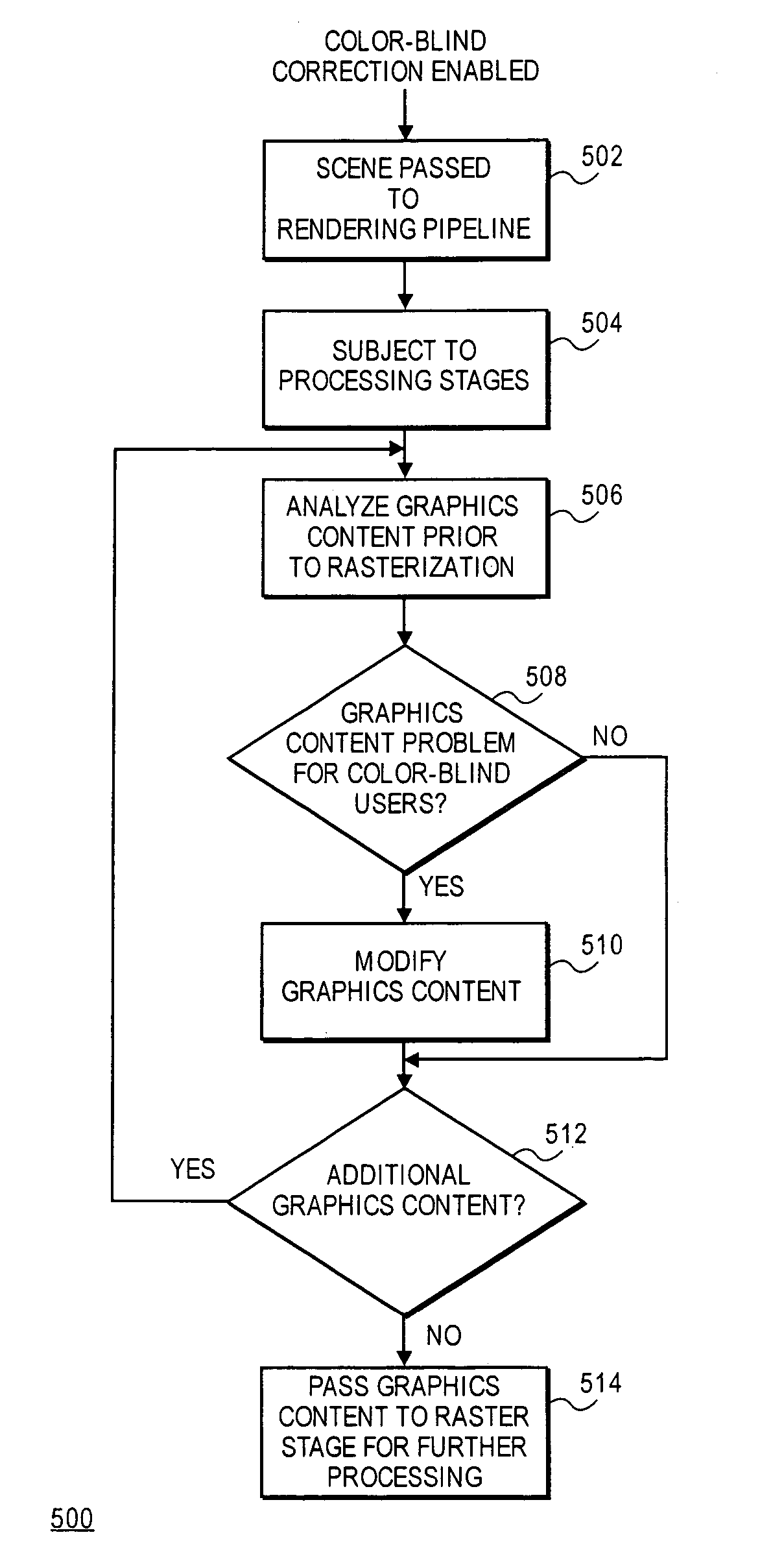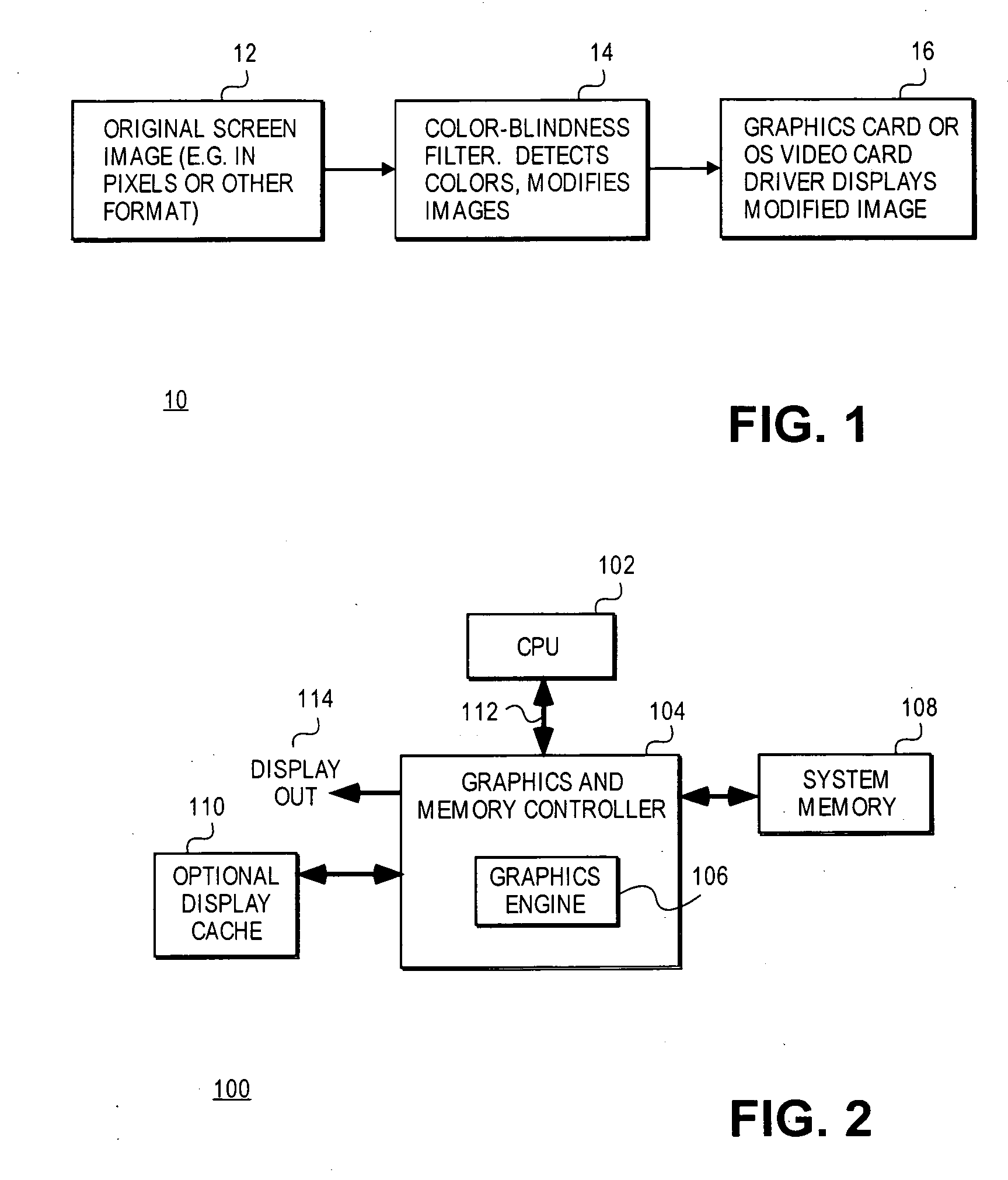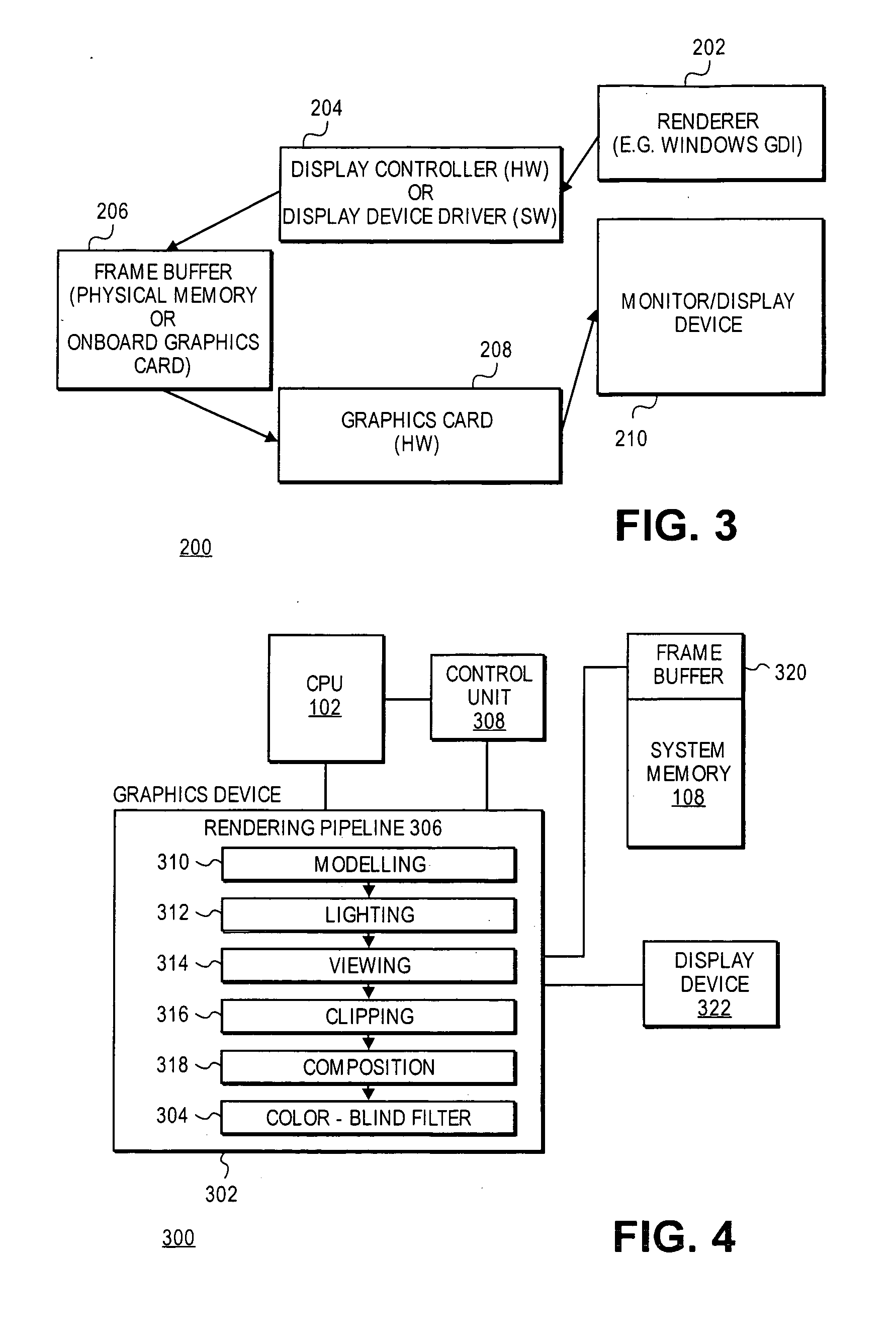Method and apparatus for modifying graphics content prior to display for color blind use
a technology of color blindness and graphics content, applied in the field of filtering graphics, can solve the problems of color blindness sufferers still being unable to provide color corrected graphics, visual pigments may be abnormally functioning, and color vision defects occur
- Summary
- Abstract
- Description
- Claims
- Application Information
AI Technical Summary
Problems solved by technology
Method used
Image
Examples
embodiment 10
[0020]FIG. 1 illustrates a block diagram of an embodiment 10 for providing color corrected graphics for color-blind users. Embodiments of the present invention provide a method and apparatus for dynamically modifying computer graphics content for colors and / or patterns that are problematic for visually challenged, in particular color-blind viewers, prior to display. In particular, graphics content may be modified in various stages of the graphics pipeline, including but not limited to, the render or raster stage, such that images provided to the user are visible to color-blind viewers upon display without further modification. As illustrated and discussed in detail below, embodiments of the present invention may be implemented in hardware, software or a combination thereof.
[0021] In particular, referring to FIG. 1, graphics content 12 in the form of an original screen image (e.g. in pixels or other format) is provided to the color-blind filter 14 of the present invention. The color-...
embodiment 200
[0032]FIG. 3 illustrates a block diagram of an embodiment 200 of a graphics pipeline including implementation of the color corrected graphics at the render and raster stage. Rendering is considered to be the entire process of taking models (usually 3D although could be 2D), performing lighting, viewing, clipping, composition and other activities to arrive at a final 2D image. Rasterization, or Rastering, is considered to be a single stage process of determining a set of pixels values (based upon a current display mode color depth, etc.), for display on the screen. Rendering is typically a multi-stage process, whereas rasterization is typically a one-stage process. The result of a rendering pipeline is fed into the raster for display. Modern computer monitors are commonly called “raster display devices” for this reason—they display information on screen via a set of bytes that represent a series of pixels. This set of pixels is often called the refresh buffer, or more commonly the fr...
embodiment 300
[0035]FIG. 4 illustrates a block diagram of an embodiment 300 of a graphics device 302 including a color blind filter 304 implemented in the render stage 306. Referring to FIG. 3, color-blind modification is implemented at the render stage of the graphics pipeline prior to rasterization of the image into the frame buffer. Rendering is the process of generating two-dimensional images of data for display on a monitor. Typically, rendering includes processing geometric primitives (e.g., points, lines and polygons) to determine component pixel values for the monitor display, a process often referred to specifically as rasterization.
[0036] In particular, referring to FIG. 4, a control unit 308 supervises the operation of the graphics device 302. Upon receiving a graphics order to render a scene, the control unit 308 passes the graphics data associated with the graphics order on to a rendering pipeline 306. The rendering pipeline 306 transforms the graphics data associated with the graphi...
PUM
 Login to View More
Login to View More Abstract
Description
Claims
Application Information
 Login to View More
Login to View More - R&D
- Intellectual Property
- Life Sciences
- Materials
- Tech Scout
- Unparalleled Data Quality
- Higher Quality Content
- 60% Fewer Hallucinations
Browse by: Latest US Patents, China's latest patents, Technical Efficacy Thesaurus, Application Domain, Technology Topic, Popular Technical Reports.
© 2025 PatSnap. All rights reserved.Legal|Privacy policy|Modern Slavery Act Transparency Statement|Sitemap|About US| Contact US: help@patsnap.com



